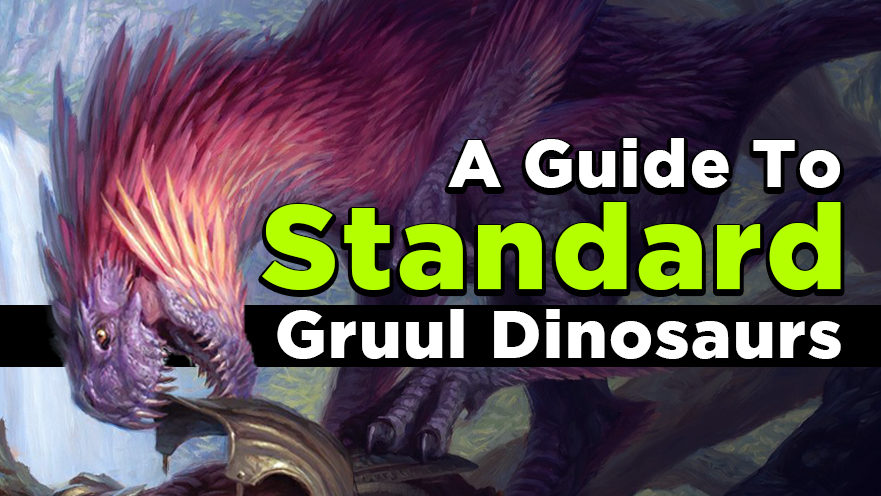Towards the end of last Standard season, Gruul decks ended up being serious contenders. Coming into this season with Core Set 2020 hitting the scene, everyone wondered if this would hold up. After all, cards like Rekindling Phoenix have become largely invalidated by cards like Cavalier of Thorns. You can overcome all of that, but you need to take a different approach while also taking advantage of some M20 cards.
My Dinosaurs Decklist
Here’s a list I’ve been playing to reasonable success on Magic Arena:
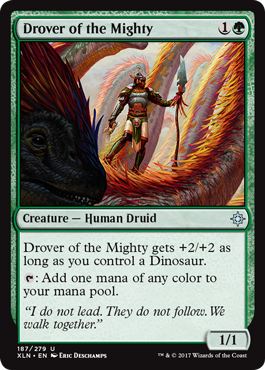
3 Drover of the Mighty
4 Marauding Raptor
2 Shifting Ceratops
4 Ripjaw Raptor
3 Regisaur Alpha
4 Gruul Spellbreaker
4 Llanowar Elves
2 Domri, Anarch of Bolas
2 Nissa, Who Shakes the World
2 Dinosaur Stampede
2 Domri’s Ambush
2 Lightning Strike
3 Shock
10 Forest
5 Mountain
4 Stomping Ground
4 Rootbound Crag
Sideboard:
2 Fry
2 Flame Sweep
2 Veil of Summer
2 Lava Coil
2 Thrashing Brontodon
3 Cindervines
2 Legion Warboss
More than Dinosaurs
Now, the first thing you might notice is that, while this list has thirteen dinosaurs, there are several other creatures as well. Gruul Spellbreaker in particular helps the deck fill gaps where dinosaurs just weren’t getting it done.
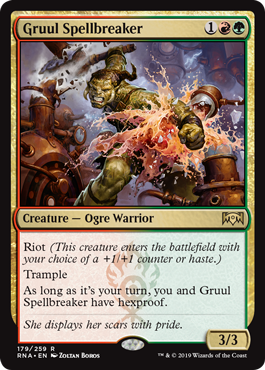
The removal in this list is versatile as well. All of it, except for Domri’s fighting activation, can be directed at planeswalkers, which keeps your cards live against every deck. It also means we aren’t playing Savage Stomp. Though I’m a fan of the card, it does nothing against opposing planeswalkers, and it’s not good when you don’t have a dinosaur on the battlefield.
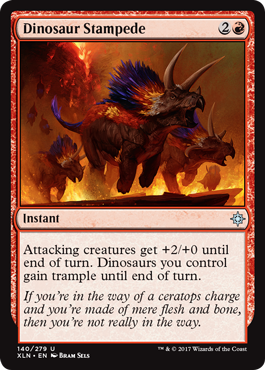
Going down the list, you may also see a card you’re unfamiliar with: Dinosaur Stampede. This card took me a while to warm up to, but I found it gives the deck the ability to threaten lethal starting on turn four. Plus, it’s a difficult card for opponents to play around. It can also force your opponent to slow way down and leave mana up while you keep moving forward. It makes blocking bad, and the trample can simply push through for all kinds of damage.
The Power of Marauding Raptor
Marauding Raptor is a key player in this list, and it also requires that you sequence your spells carefully. Marauding Raptor makes ALL creatures cost less, not just dinosaurs. Plus, its triggered ability might kill your Llanowar Elves, so be careful! (Hey, those guys are mad and hungry!) This may sound obvious, but it’s quite easy to get caught up and forget.

While we’re on the topic of Marauding Raptor, you won’t often want it in multiples. However, there will be times where you have two Ripjaw Raptors in hand, and that’s awesome, since they can each stand up to two Marauding Raptor triggers on the same turn. And you get bonus cards on top of it!
There are a few other situations when you’ll want two Marauding Raptors on the table. If your opponent is able to block and kill one, it’s worth playing a second to get some extra damage in from the attack boost, knowing that one will die. There are also times where the attack boost on its own gets the job done. Regisaur Alpha will cause Marauding Raptor to trigger twice!
Sideboarding
The sideboard makes a few concessions to matchups against control and the Nexus decks. With the sideboard built as it is, these become completely reasonable matchups. You’ll often side out cards like Domri’s Ambush and Dinosaur Stampede and so you can go all-in on Cindervines and Legion Warboss.
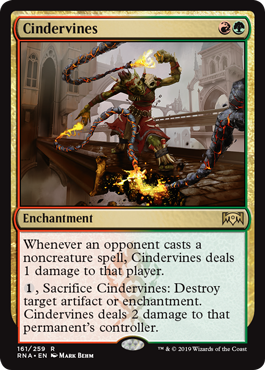
I’m still on the fence about Veil of Summer. I think that it combines well with Fry out of the sideboard if you have a lot of Mono-Blue or Blue-White Flyers/Spirits in your metagame. Truly, this sideboard could benefit from the addition of Shifting Ceratops, which is really powerful in those matchups. (It also has some weight in the Esper and Grixis control matchups.) Unfortunately, it feels like the sideboard is tight for spots as it is.
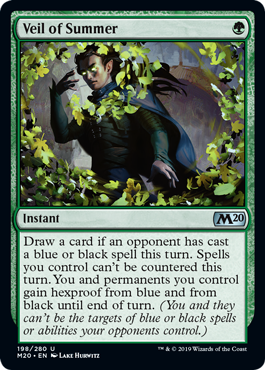
The two matchups you’ll likely struggle with most are Command the Dreadhorde and Vampires. The Command matchup is largely dependent on how well you start out of the gate. If you get a slow draw, they get entirely too much time to build up and close out with a powerful spell. As for Vampires, I’m still trying to sort this one out. They have deathtouch creatures that you need to answer immediately, or they become brick walls. You also can get caught up having to stop their Knight of the Ebon Legion and Sorin, Imperious Bloodlord from taking over the game. It’s not unwinnable, but you’ll be fighting uphill most of the way.
Variations
If you have a lot of decks with large creatures in your metagame, there’s another option: add black mana sources and play Rotting Regisaur. This will allow you to punch bigger when you need to, and it unlocks sideboard cards like Cast Down. Sometimes damage isn’t enough, and you just need to continue clearing the path.
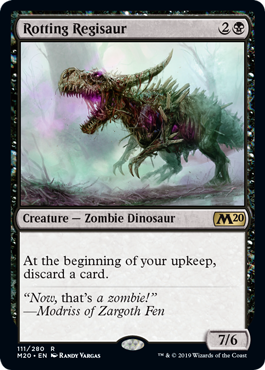
If there are more slow decks in your metagame, consider large planeswalkers to help you close. Vivien Reid and Chandra, Awakened Inferno are good for this task. Carnage Tyrant is fine, but also a bit of a trap, as he doesn’t do quite enough when compared to your other five- and six-mana options. However, if you’re playing against a lot of control decks packing spot removal , it might be time to let the bad boy out of his cage.
This deck is a lot of fun and brings big game to the table. Don’t be fooled by its simplicity, though – practice with it a bit before rolling up to your Friday Night Magic event. There are several small nuances to get familiar with: sequencing is important, as well as understanding how each card affects the others from turn to turn.
Most importantly, have fun, and stomp the competition!

DeQuan is a former retailer, marketer, and designer in the game industry. He’s been playing Magic since 1995 and currently hosts the Color of Magic podcast. If you’re sitting across the table from him, expect to see lots of green and red cards. Find him on social media at @powrdragn.

